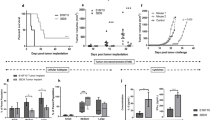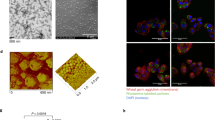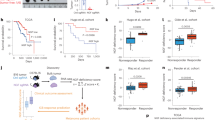Abstract
Melanoma is the most deadly type of skin cancer, constituting annually ∼75% of all cutaneous cancer-related deaths due to metastatic spread. Currently, because of metastatic spread, there are no effective treatment options for late-stage metastatic melanoma patients. Studies over the past two decades have provided insight into several complex molecular mechanisms as to how these malignancies evade immunological control, indicating the importance of immune escape or suppression for tumor survival. Thus, it is essential to develop innovative cancer strategies and address immune obstacles with the goal of generating more effective immunotherapies. One important area of study is to further elucidate the role and significance of myeloid-derived suppressor cells (MDSCs) in the maintenance of the tumor microenvironment. These cells possess a remarkable ability to suppress immune responses and, as such, facilitate tumor growth. Thus, MDSCs represent an important new target for preventing tumor progression and escape from immune control. In this study, we investigated the role of MDSCs in immune suppression of T cells in an antigen-specific B16 melanoma murine system utilizing a novel synthetic tyrosinase (Tyr) DNA vaccine therapy in both prophylactic and therapeutic models. This Tyr vaccine induced a robust and broad immune response, including directing CD8 T-cell infiltration into tumor sites. The vaccine also reduced the number of MDSCs in the tumor microenvironment through the downregulation of monocyte chemoattractant protein 1, interleukin-10, CXCL5 and arginase II, factors important for MDSC expansion. This novel synthetic DNA vaccine significantly reduced the melanoma tumor burden and increased survival in vivo, due likely, in part, to the facilitation of a change in the tumor microenvironment through MDSC suppression.
This is a preview of subscription content, access via your institution
Access options
Subscribe to this journal
Receive 12 print issues and online access
$259.00 per year
only $21.58 per issue
Buy this article
- Purchase on Springer Link
- Instant access to full article PDF
Prices may be subject to local taxes which are calculated during checkout






Similar content being viewed by others
References
Hanahan D, Weinberg RA . The hallmarks of cancer. Cell 2000; 100: 57–70.
Rosenberg SA . Finding suitable targets is the major obstacle to cancer gene therapy. Cancer Gene Ther 2014; 21: 45–47.
Bajetta E, Del Vecchio M, Bernard-Marty C, Vitali M, Buzzoni R, Rixe O et al. Metastatic melanoma: chemotherapy. Semin Oncol 2002; 29: 427–445.
Rosenberg SA . IL-2: the first effective immunotherapy for human cancer. J Immunol 2014; 192: 5451–5458.
Yang JC, Sherry RM, Rosenberg SA . Melanoma: why is sentinel lymph node biopsy ‘standard of care’ for melanoma? Nat Rev Clin Oncol 2014; 11: 245–246.
Johnstone RW, Ruefli AA, Lowe SW . Apoptosis: a link between cancer genetics and chemotherapy. Cell 2002; 108: 153–164.
Gerber HP, Olazoglu E, Grewal IS . Targeting inflammatory cells to improve anti-VEGF therapies in oncology. Recent Results Cancer Res 2010; 180: 185–200.
Duffy A, Zhao F, Haile L, Gamrekelashvili J, Fioravanti S, Ma C et al. Comparative analysis of monocytic and granulocytic myeloid-derived suppressor cell subsets in patients with gastrointestinal malignancies. Cancer Immunol Immunother 2012; 62: 299–307.
Chou HS, Hsieh CC, Yang HR, Wang L, Arakawa Y, Brown K et al. Hepatic stellate cells regulate immune response by way of induction of myeloid suppressor cells in mice. Hepatology 2011; 53: 1007–1019.
Dang Y, Wagner WM, Gad E, Rastetter L, Berger CM, Holt GE et al. Dendritic cell-activating vaccine adjuvants differ in the ability to elicit antitumor immunity due to an adjuvant-specific induction of immunosuppressive cells. Clin Cancer Res 2012; 18: 3122–3131.
Wolchok JD, Yuan J, Houghton AN, Gallardo HF, Rasalan TS, Wang J et al. Safety and immunogenicity of tyrosinase DNA vaccines in patients with melanoma. Mol Ther 2007; 15: 2044–2050.
Aris M, Zubieta MR, Colombo M, Arriaga JM, Bianchini M, Alperovich M et al. MART-1- and gp100-expressing and -non-expressing melanoma cells are equally proliferative in tumors and clonogenic in vitro. J Invest Dermat 2012; 132: 365–374.
Yuan J, Ginsberg B, Page D, Li Y, Rasalan T, Gallardo HF et al. CTLA-4 blockade increases antigen-specific CD8(+) T cells in prevaccinated patients with melanoma: three cases. Cancer Immunol Immunother 2011; 60: 1137–1146.
Ginsberg BA, Gallardo HF, Rasalan TS, Adamow M, Mu Z, Tandon S et al. Immunologic response to xenogeneic gp100 DNA in melanoma patients: comparison of particle-mediated epidermal delivery with intramuscular injection. Clin Cancer Res 2010; 16: 4057–4065.
Weber J, Boswell W, Smith J, Hersh E, Snively J, Diaz M et al. Phase 1 trial of intranodal injection of a Melan-A/MART-1 DNA plasmid vaccine in patients with stage IV melanoma. J Immunother 2008; 31: 215–223.
Saenger YM, Li Y, Chiou KC, Chan B, Rizzuto G, Terzulli SL et al. Improved tumor immunity using anti-tyrosinase related protein-1 monoclonal antibody combined with DNA vaccines in murine melanoma. Cancer Res 2008; 68: 9884–9891.
Perales MA, Yuan J, Powel S, Gallardo HF, Rasalan TS, Gonzalez C et al. Phase I/II study of GM-CSF DNA as an adjuvant for a multipeptide cancer vaccine in patients with advanced melanoma. Mol Ther 2008; 16: 2022–2029.
Smith KA, Qiu Z, Wong R, Tam VL, Tam BL, Joea DK et al. Multivalent immunity targeting tumor-associated antigens by intra-lymph node DNA-prime, peptide-boost vaccination. Cancer Gene Ther 2011; 18: 63–76.
Steitz J, Tuting T . Biolistic DNA vaccination against melanoma. Methods Mol Biol 2013; 940: 317–337.
Yang L, Huang J, Ren X, Gorska AE, Chytil A, Aakre M et al. Abrogation of TGF beta signaling in mammary carcinomas recruits Gr-1+CD11b+ myeloid cells that promote metastasis. Cancer Cell 2008; 13: 23–35.
Rosborough BR, Castellaneta A, Natarajan S, Thomson AW, Turnquist HR . Histone deacetylase inhibition facilitates GM-CSF-mediated expansion of myeloid-derived suppressor cells in vitro and in vivo. J Leukoc Biol 2012; 91: 701–709.
Rosati SF, Parkhurst MR, Hong Y, Zheng Z, Feldman SA, Rao M et al. A novel murine T-cell receptor targeting NY-ESO-1. J Immunother 2014; 37: 135–146.
Youn JI, Collazo M, Shalova IN, Biswas SK, Gabrilovich DI . Characterization of the nature of granulocytic myeloid-derived suppressor cells in tumor-bearing mice. J Leukoc Biol 2012; 91: 167–181.
Muthumani K, Wise MC, Broderick KE, Hutnick N, Goodman J, Flingai S et al. HIV-1 Env DNA vaccine plus protein boost delivered by EP expands B- and T-cell responses and neutralizing phenotype in vivo. PLoS One 2013; 8: e84234.
Muthumani K, Flingai S, Wise M, Tingey C, Ugen KE, Weiner DB . Optimized and enhanced DNA plasmid vector based in vivo construction of a neutralizing anti-HIV-1 envelope glycoprotein Fab. Hum Vacc Immunother 2013; 9: 2253–2262.
Draghia-Akli R, Khan AS . In vivo electroporation of gene sequences for therapeutic and vaccination applications. Recent Pat DNA Gene Seq 2007; 1: 207–213.
Hirao LA, Draghia-Akli R, Prigge JT, Yang M, Satishchandran A, Wu L et al. Multivalent smallpox DNA vaccine delivered by intradermal electroporation drives protective immunity in nonhuman primates against lethal monkeypox challenge. J Infect Dis 2011; 203: 95–102.
Mallilankaraman K, Shedlock DJ, Bao H, Kawalekar OU, Fagone P, Ramanathan AA et al. A DNA vaccine against chikungunya virus is protective in mice and induces neutralizing antibodies in mice and nonhuman primates. PLoS Negl Trop Dis 2011; 5: e928.
Shin TH, Pankhong P, Yan J, Khan AS, Sardesai NY, Weiner DB . Induction of robust cellular immunity against HPV6 and HPV11 in mice by DNA vaccine encoding for E6/E7 antigen. Hum Vacc Immunother 2012; 8: 470–478.
Muthumani K, Zhang D, Dayes NS, Hwang DS, Calarota SA, Choo AY et al. Novel engineered HIV-1 East African Clade-A gp160 plasmid construct induces strong humoral and cell-mediated immune responses in vivo. Virology 2003; 314: 134–146.
Anthony DD, Lehmann PV . T-cell epitope mapping using the ELISPOT approach. Methods 2003; 29: 260–269.
Kruisbeek AM . In vivo depletion of CD4- and CD8-specific T cells. Curr Protoc Immunol 2001; Chapter 4: Unit 4 1.
Yi H, Guo C, Yu X, Zuo D, Wang XY . Mouse CD11b+Gr-1+ myeloid cells can promote Th17 cell differentiation and experimental autoimmune encephalomyelitis. J Immunol 2012; 189: 4295–4304.
Yan J, Pankhong P, Shin TH, Obeng-Adjei N, Morrow MP, Walters JN et al. Highly optimized DNA vaccine targeting human telomerase reverse transcriptase stimulates potent antitumor immunity. Cancer Immunol Res 2013; 1: 179–189.
Hirao LA, Wu L, Khan AS, Satishchandran A, Draghia-Akli R, Weiner DB . Intradermal/subcutaneous immunization by electroporation improves plasmid vaccine delivery and potency in pigs and rhesus macaques. Vaccine 2008; 26: 440–448.
Nagaraj S, Schrum AG, Cho HI, Celis E, Gabrilovich DI . Mechanism of T cell tolerance induced by myeloid-derived suppressor cells. J Immunol 2010; 184: 3106–3116.
Centuori SM, Trad M, Lacasse CJ, Alizadeh D, Larmonier CB, Hanke NT et al. Myeloid-derived suppressor cells from tumor-bearing mice impair TGF-beta-induced differentiation of CD4+CD25+FoxP3+ Tregs from CD4+CD25-FoxP3- T cells. J Leukoc Biol 2012; 92: 987–997.
Hoechst B, Gamrekelashvili J, Manns MP, Greten TF, Korangy F . Plasticity of human Th17 cells and iTregs is orchestrated by different subsets of myeloid cells. Blood 2011; 117: 6532–6541.
Sinha P, Clements VK, Bunt SK, Albelda SM, Ostrand-Rosenberg S . Cross-talk between myeloid-derived suppressor cells and macrophages subverts tumor immunity toward a type 2 response. J Immunol 2007; 179: 977–983.
Schlecker E, Stojanovic A, Eisen C, Quack C, Falk CS, Umansky V et al. Tumor-infiltrating monocytic myeloid-derived suppressor cells mediate CCR5-dependent recruitment of regulatory T cells favoring tumor growth. J Immunol 2012; 189: 5602–5611.
Gabitass RF, Annels NE, Stocken DD, Pandha HA, Middleton GW . Elevated myeloid-derived suppressor cells in pancreatic, esophageal and gastric cancer are an independent prognostic factor and are associated with significant elevation of the Th2 cytokine interleukin-13. Cancer Immunol Immunother 2011; 60: 1419–1430.
Tanikawa T, Wilke CM, Kryczek I, Chen GY, Kao J, Nunez G et al. Interleukin-10 ablation promotes tumor development, growth, and metastasis. Cancer Res 2012; 72: 420–429.
Pilon-Thomas S, Nelson N, Vohra N, Jerald M, Pendleton L, Szekeres K et al. Murine pancreatic adenocarcinoma dampens SHIP-1 expression and alters MDSC homeostasis and function. PLoS One 2011; 6: e27729.
Chornoguz O, Grmai L, Sinha P, Artemenko KA, Zubarev RA, Ostrand-Rosenberg S . Proteomic pathway analysis reveals inflammation increases myeloid-derived suppressor cell resistance to apoptosis. Mol Cell Proteomics 2011; 10: M110 002980.
Chang MS, McNinch J, Basu R, Simonet S . Cloning and characterization of the human neutrophil-activating peptide (ENA-78) gene. J Biol Chem 1994; 269: 25277–25282.
Mei J, Liu Y, Dai N, Hoffmann C, Hudock KM, Zhang P et al. Cxcr2 and Cxcl5 regulate the IL-17/G-CSF axis and neutrophil homeostasis in mice. J Clin Invest 2012; 122: 974–986.
Rodriguez PC, Quiceno DG, Zabaleta J, Ortiz B, Zea AH, Piazuelo MB et al. Arginase I production in the tumor microenvironment by mature myeloid cells inhibits T-cell receptor expression and antigen-specific T-cell responses. Cancer Res 2004; 64: 5839–5849.
Weiner DB, Kim JJ . Cancer vaccines: is the future now? Expert Rev Vaccines 2002; 1: 257–260.
Grosenbaugh DA, Leard AT, Bergman PJ, Klein MK, Meleo K, Susaneck S et al. Safety and efficacy of a xenogeneic DNA vaccine encoding for human tyrosinase as adjunctive treatment for oral malignant melanoma in dogs following surgical excision of the primary tumor. Am J Vet Res 2011; 72: 1631–1638.
Boutte AM, McDonald WH, Shyr Y, Yang L, Lin PC . Characterization of the MDSC proteome associated with metastatic murine mammary tumors using label-free mass spectrometry and shotgun proteomics. PLoS One 2011; 6: e22446.
Bruchard M, Mignot G, Derangere V, Chalmin F, Chevriaux A, Vegran F et al. Chemotherapy-triggered cathepsin B release in myeloid-derived suppressor cells activates the Nlrp3 inflammasome and promotes tumor growth. Nat Med 2012; 19: 57–64.
Bunt SK, Yang L, Sinha P, Clements VK, Leips J, Ostrand-Rosenberg S . Reduced inflammation in the tumor microenvironment delays the accumulation of myeloid-derived suppressor cells and limits tumor progression. Cancer Res 2007; 67: 10019–10026.
Corzo CA, Condamine T, Lu L, Cotter MJ, Youn JI, Cheng P et al. HIF-1alpha regulates function and differentiation of myeloid-derived suppressor cells in the tumor microenvironment. J Exp Med 2010; 207: 2439–2453.
Glass GE, Chan JK, Freidin A, Feldmann M, Horwood NJ, Nanchahal J . TNF-alpha promotes fracture repair by augmenting the recruitment and differentiation of muscle-derived stromal cells. Proc Natl Acad Sci USA 2011; 108: 1585–1590.
Fagone P, Shedlock DJ, Bao H, Kawalekar OU, Yan J, Gupta D et al. Molecular adjuvant HMGB1 enhances anti-influenza immunity during DNA vaccination. Gene Ther 2011; 18: 1070–1077.
Bagarazzi ML, Yan J, Morrow MP, Shen X, Parker RL, Lee JC et al. Immunotherapy against HPV16/18 generates potent TH1 and cytotoxic cellular immune responses. Sci Transl Med 2012; 4: 155ra138.
Kim JJ, Tsai A, Nottingham LK, Morrison L, Cunning DM, Oh J et al. Intracellular adhesion molecule-1 modulates beta-chemokines and directly costimulates T cells in vivo. J Clin Invest 1999; 103: 869–877.
Chattergoon MA, Kim JJ, Yang JS, Robinson TM, Lee DJ, Dentchev T et al. Targeted antigen delivery to antigen-presenting cells including dendritic cells by engineered Fas-mediated apoptosis. Nat Biotechnol 2000; 18: 974–979.
Sin J, Kim JJ, Pachuk C, Satishchandran C, Weiner DB . DNA vaccines encoding interleukin-8 and RANTES enhance antigen-specific Th1-type CD4(+) T-cell-mediated protective immunity against herpes simplex virus type 2 in vivo. J Virol 2000; 74: 11173–11180.
Choo AY, Choo DK, Kim JJ, Weiner DB . DNA vaccination in immunotherapy of cancer. Cancer Treatment Res 2005; 123: 137–156.
Kalams SA, Parker SD, Elizaga M, Metch B, Edupuganti S, Hural J et al. Safety and comparative immunogenicity of an HIV-1 DNA vaccine in combination with plasmid interleukin 12 and impact of intramuscular electroporation for delivery. J Infect Dis 2013; 208: 818–829.
Bellone M, Cantarella D, Castiglioni P, Crosti MC, Ronchetti A, Moro M et al. Relevance of the tumor antigen in the validation of three vaccination strategies for melanoma. J Immunol 2000; 165: 2651–2656.
Ozao-Choy J, Ma G, Kao J, Wang GX, Meseck M, Sung M et al. The novel role of tyrosine kinase inhibitor in the reversal of immune suppression and modulation of tumor microenvironment for immune-based cancer therapies. Cancer Res 2009; 69: 2514–2522.
Godet Y, Bonnin A, Guilloux Y, Vignard V, Schadendorf D, Dreno B et al. A new tyrosinase epitope recognized in the HLA-B*4002 context by CTL from melanoma patients. Cancer Immunol Immunother 2009; 58: 271–280.
Kawakami Y, Robbins PF, Wang X, Tupesis JP, Parkhurst MR, Kang X et al. Identification of new melanoma epitopes on melanosomal proteins recognized by tumor infiltrating T lymphocytes restricted by HLA-A1, -A2, and -A3 alleles. J Immunol 1998; 161: 6985–6992.
Tuting T, Wilson CC, Martin DM, Kasamon YL, Rowles J, Ma DI et al. Autologous human monocyte-derived dendritic cells genetically modified to express melanoma antigens elicit primary cytotoxic T cell responses in vitro: enhancement by cotransfection of genes encoding the Th1-biasing cytokines IL-12 and IFN-alpha. J Immunol 1998; 160: 1139–1147.
Wang S, Bartido S, Yang G, Qin J, Moroi Y, Panageas KS et al. A role for a melanosome transport signal in accessing the MHC class II presentation pathway and in eliciting CD4+ T cell responses. J Immunol 1999; 163: 5820–5826.
Olson JA, McDonald-Hyman C, Jameson SC, Hamilton SE . Effector-like CD8(+) T cells in the memory population mediate potent protective immunity. Immunity 2013; 38: 1250–1260.
Ghansah T . A novel strategy for modulation of MDSC to enhance cancer immunotherapy. Oncoimmunology 2012; 1: 984–985.
LaFace D, Talmadge J . Meeting report: regulatory myeloid cells. Int Immunopharmacol 2011; 11: 780–782.
Acknowledgements
We acknowledge members of the Weiner laboratory for significant contributions and/or critical reading and editing of the manuscript. DBW notes funding from the National Institutes of Health, Basser Research Center for BRCA and Inovio Pharmaceuticals. We also thank Penn CFAR and the ACC core facilities for their support.
Author information
Authors and Affiliations
Corresponding author
Ethics declarations
Competing interests
DBW has grant funding, participates in industry collaborations and has received speaking honoraria and fees for consulting. This service includes serving on scientific review committees and advisory boards. Remuneration includes direct payments or stock or stock options and, in the interest of disclosure, therefore he notes potential conflicts associated with this work with Pfizer, Medimmune, Inovio, Merck, VGXi, OncoSec, Roche, Aldevron and possibly others. Licensing of technology from his laboratory has created over 100 jobs in the biotech/pharma industry. KEU also reports a conflict in terms of co-inventorship and stock ownership in technology licensed to Oncosec Medical Corporation. The other authors declare no conflict of interest. KAK, JJK and NYS are employees of Inovio Pharmaceuticals, and as such receive salary and benefits including ownership of stock and stock option from the company.
Rights and permissions
About this article
Cite this article
Yan, J., Tingey, C., Lyde, R. et al. Novel and enhanced anti-melanoma DNA vaccine targeting the tyrosinase protein inhibits myeloid-derived suppressor cells and tumor growth in a syngeneic prophylactic and therapeutic murine model. Cancer Gene Ther 21, 507–517 (2014). https://doi.org/10.1038/cgt.2014.56
Received:
Accepted:
Published:
Issue Date:
DOI: https://doi.org/10.1038/cgt.2014.56
This article is cited by
-
Booster immunizations with DNA plasmids encoding HER-2/neu prevent spontaneous mammary cancer in HER-2/neu transgenic mice over life span
Scientific Reports (2017)
-
Identification of crucial genes in intracranial aneurysm based on weighted gene coexpression network analysis
Cancer Gene Therapy (2015)



